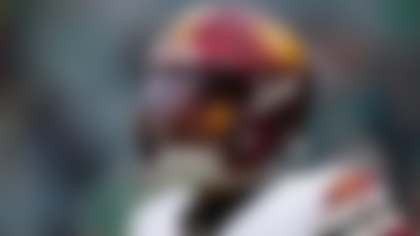INDIANAPOLIS -- In guiding the New England Patriots and New York Giants to Super Bowl XLVI, Bill Belichick and Tom Coughlin have been able to solve the pressing issues for their respective teams. Although some woes came on the offensive side of the ball, the biggest obstacles on the road to the title game were on defense. These savvy leaders found a way to address them and spark a run through the playoffs.
New England
Problem 1: Victimized by big plays in the passing game
Solution: Getting better discipline and focus from the secondary
After surrendering a league-worst 79 pass plays of 20-plus yards during the regular season, the Patriots have only allowed four big plays in the playoffs. The hodgepodge collection of defensive backs has done a better job of not allowing balls to fly over the top, and the elimination of the deep ball has resulted in fewer explosive plays altogether from their opponents.
One key factor in limiting big plays has been the effective reshuffling of personnel in the back end. Belichick has increasingly used Devin McCourty at free safety on passing downs to take advantage of his speed and athleticism in the middle. McCourty's superior range has led to fewer completions down the boundary, forcing quarterbacks to settle for more short and intermediate throws. Although passers accumulate gaudy yardage totals with the dink-and-dunk approach, the reduction of long passes has kept opponents from scoring touchdowns on quick-strike plays.
The insertion of Sterling Moore and Julian Edelman into sub-packages has also contributed to the improved performance from the Patriots' secondary. Moore, a former practice squad member of the Oakland Raiders, has been solid at cornerback, despite entering the league as a safety. He finished the regular season with a pair of interceptions against Buffalo and has continued to make plays on the ball during the postseason with four breakups. Most notably, Moore jarred loose a potential game-winning touchdown catch by Baltimore's Lee Evans in the final moments of the AFC Championship Game.
Edelman, who also logs snaps as a wide receiver and kick returner, has been effective covering the slot as a nickel cornerback. He has utilized his athleticism and aggressiveness to jam receivers near the line of scrimmage, and his route recognition allows him to make plays on the ball. While he is certain to be a target with his status as a former receiver, quarterbacks should be wary of attacking Edelman due to his savvy and guile.
Problem 2: Unable to stop the run
Solution: Adapting the scheme to better suit New England's personnel up front
Brooks: Monster in the middle
New England's defense has risen up in the postseason, and Bucky Brooks says much of the credit goes to one mountain of a man: nose tackle Vince Wilfork. **More ...**
The Patriots started the season utilizing more four-man fronts, but they have morphed back into a 3-4 approach in recent weeks. The move has allowed the Patriots to put three big bodies at the line of scrimmage within the tackle box, forcing opponents to use double-teams at the point of attack and freeing linebackers Jerod Mayo and Brandon Spikes to run unimpeded to the ball.
Belichick has made Vince Wilfork the critical element of his game plan, moving him from his customary nose tackle spot to defensive end in the 3-4. This places the Patriots' most disruptive defender in a critical spot over the offensive tackle, where he creates issues in the run game with his imposing size, strength and power. His ability to generate immediate penetration at the point of attack allows the Patriots' other run stuffers (Kyle Love and Brandon Deaderick) to wreak havoc with their movement on slants and spins.
Problem 3: Non-existent pass rush
Solution: Building the pass rush around Vince Wilfork's power-based game
The loss of DE Andre Carter robbed the Patriots of their best pass rusher, but Belichick tweaked his defensive approach to compensate for the loss. New England incorporated more three-man rushes on passing downs with Wilfork used primarily as a bull rusher. At 6-foot-2, 325-plus pounds, he single-handedly collapses the pocket by forklifting and driving blockers into the quarterback's lap. The pressure up the middle certainly makes quarterbacks uncomfortable, leading to hurried throws from the pocket. In addition, Wilfork's ability to create immediate penetration forces quarterbacks to flee the pocket to the outside, which leads to sacks from Mark Anderson and Rob Ninkovich off the edge. The combination of up-the-gut penetration and edge crashes makes life miserable for quarterbacks, provided the harassment is consistent for four quarters.
The Patriots' pass rush lacks the pizzazz of their counterparts, but it is hard to dispute its effectiveness through the first two games of the playoffs.
New York
Problem 1: Too many blown assignments and mental mistakes
Solution: Simplifying the game plan and adjustments
The Giants' defensive struggles were the result of several players blowing assignments and responsibilities within the scheme. Fewell's system featured a lot of pre-snap checks and adjustments based on offensive formations, but the Giants' defenders routinely appeared confused by their assignments, resulting in big plays from the opponents. Part of their struggles could be attributed to attempting to assimilate a number of rookies and young players into the lineup. Youth and inexperience typically leads to miscues, and the multiplicity of the Giants' scheme only exacerbated the situation.
To remedy the issue, the Giants have thrown out some of the complexities of their scheme and eliminated some of the audibles that led to confusion in the back end. This reduces the mental clutter, leading to faster, more effective play from the unit. In addition, the simplified approach has allowed the secondary to focus more on pre-snap disguises designed to confuse quarterbacks at the line of scrimmage. Veterans like Deon Grant, Antrel Rolle and Kenny Phillips, in particular, have done an excellent job moving around in the back end, morphing from single-high safety looks to two-deep safety coverage prior to the snap. This last-minute movement has resulted in more turnovers and negative plays from quarterbacks facing the Giants.
Problem 2: Inconsistent pass rush
Solution: Getting a clean bill of health from Osi Umenyiora and Justin Tuck.
The Giants are at their best when they are able to overwhelm opponents with their deep and talented defensive-line rotation. The cumulative effect of facing waves of big, powerful and athletic defenders wears down blockers by the end of the game, leading to critical sacks and turnovers in the fourth quarter.
During the Giants' midseason slump, the absences of Umenyiora and Tuck prevented the defense from utilizing multiple big bodies to relentlessly attack up front. Consequently, quarterbacks had more time to pick apart the Giants' secondary with an assortment of pinpoint throws at every level. Since the duo returned, however, the Giants have pummeled opponents up front and the constant harassment of quarterbacks has led to several mistakes and turnovers.
Umenyiora, who missed seven games during the regular season, has tallied 5 1/2 sacks over the past four games, including 3 1/2 during the playoffs. His combination of speed, quickness and athleticism overwhelms edge blockers, and he has emerged as the Giants' most disruptive defender. Tuck, who missed four regular season games, has started to regain his Pro Bowl form during the playoffs. He's racked up 1.5 sacks and thrived as a versatile defender along the line. Fewell has aligned the veteran at multiple positions on the front to take advantage of favorable matchups against opponents. Tuck's ability to create pressure in the middle as part of the Giants' "NASCAR" package (a front four that features Jason Pierre-Paul, Mathias Kiwanuka, Tuck and Umenyiora) poses serious problems for opponents and gives New York a significant advantage on passing downs.
Problem 3:Poor run-stopping by the linebackers
Solution: Adding more experience to the linebacker corps with the re-signing of Chase Blackburn.
Brooks: Super Bowl XLVI X-factors
Chad Ochocino has been a disappointment this season for the Patriots, but Bucky Brooks writes he could have a big game Sunday against the Giants. **More ...**
The Giants attempted to play the early part of the season with several young players (including Greg Jones and Mark Herzlich) at linebacker, but the youth and inexperience was a poor fit against the run. The rookie linebackers routinely ran past their assigned gaps, which led to big gains from crafty runners adept at finding cutback lanes.
Since Blackburn resigned with the team prior to Week 13, the Giants' run defense has improved dramatically with a veteran presence in the middle. The seventh-year pro has masked his athletic deficiencies with instincts and awareness, and his disciplined approach has led to more cohesive play at the point of attack. With the interior solidified by multiple defenders hitting their assigned gaps, runners have found few creases between the tackles and the reduction of explosive runs has helped keep their recent opponents behind the chains.
With most defensive game plans built around the premise of stopping the run, the insertion of a greybeard into the starting lineup has helped the Giants inch closer to fulfilling their championship aspirations.
Follow Bucky Brooks on Twitter @BuckyBrooks




